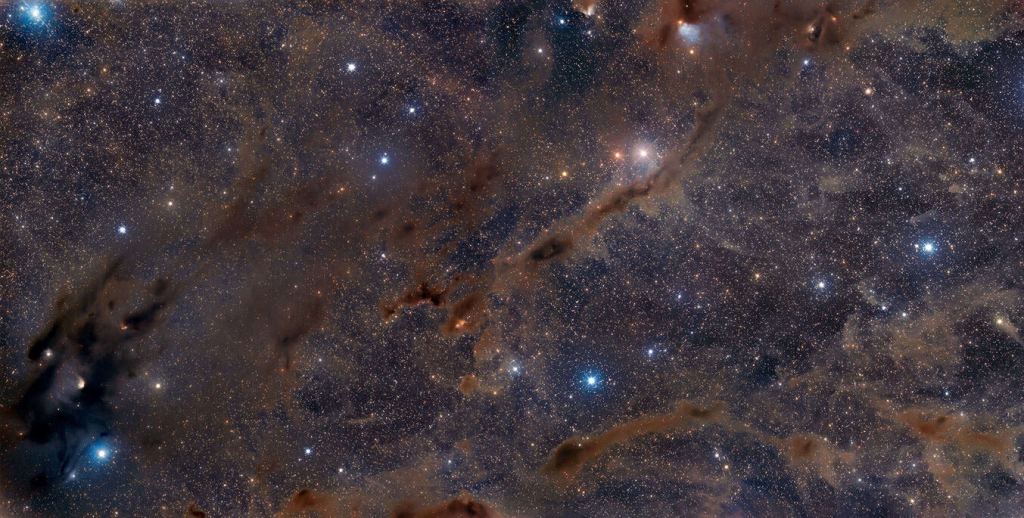It stands to reason that stars formed from the same cloud of material will have the same metallicity. That fact underpins some avenues of astronomical research, like the search for the Sun's siblings. But for some binary stars, it's not always true. Their composition can be different despite forming from the same reservoir of material, and the difference extends to their planetary systems.
New research shows that the differences can be traced back to their earliest stages of formation.
Binary stars are the norm, while solitary stars like our Sun are in the minority. Some estimates place the number of binary stars in the Milky Way at up to 85%. These pairs of stars form from the same giant molecular clouds. Each cloud has a certain abundance of metals, and that abundance should be reflected in the stars themselves.
But that's not always the case.
Sometimes, the metallicity of a pair of binary stars doesn't agree. Astrophysicists have proposed three explanations for this.
Two explanations involve events occurring later in a star's life after they've left the main sequence. One is atomic diffusion, where chemical elements settle into gradient layers in the star. The layers are determined by a star's gravity and temperature. The second one involves a nearby planet. As stars age, expand, and become red giants, they engulf nearby planets. The planet would introduce new chemistry into the star, differentiating it from its binary partner.
The third explanation reaches back in time to the binary pair's formation. This explanation says that the giant molecular cloud that spawned the stars wasn't homogeneous. Instead, there were regional differences in the cloud's chemistry, and stars formed in different locations showed noticeable differences in their chemical makeup.
A team of researchers wanted to dig into this third explanation to test its veracity. They used the Gemini South Telescope and its Gemini High-Resolution Optical SpecTrograph (GHOST) to examine the light from a pair of giant binary stars. The observations revealed significant differences in their spectra.
They presented their results in a paper titled " Disentangling the origin of chemical differences using GHOST." It's published in the journal Astronomy and Astrophysics. The lead author is Carlos Saffe of the Institute of Astronomical, Earth and Space Sciences (ICATE-CONICET) in Argentina. The researchers examined a pair of giant binary stars called HD 138202 + CD?30 12303.
The three explanations for chemical differences between binary stars all stem from studies of main sequence stars. The main sequence is where stars spend most of their time, reliably fusing hydrogen into helium for billions of years.
But Saffe and his colleagues took a different approach. They used Gemini and GHOST to examine a pair of binary stars that had left the main sequence behind and become giant stars. These stars are different from main sequence stars.
"GHOST's extremely high-quality spectra offered unprecedented resolution," said Saffe, "allowing us to measure the stars' stellar parameters and chemical abundances with the highest possible precision."
These stars experience dredge-ups. Dredge-ups are when a star's convection zone extends from the surface all the way down to where fusion is taking place. They're powerful convective currents that mix fusion products into the star's surface layer when a main sequence star becomes a red giant.
However, the researchers say that dredge-ups and the atomic diffusion they drive can't explain the wide difference between stars.
The convection currents would also rule out the second proposed explanation: planetary engulfment. With such strong currents, the chemicals from an engulfed planet would quickly be diluted. "Giant stars are thought to be significantly less sensitive than main-sequence stars to engulfment events," the authors write.
The authors went further and calculated the amount of planetary material a giant star would need to digest to cause the difference in metallicity between the stars. "We estimate that star A would need to have ingested between 11.0 and 150.0 Jupiter masses of planetary material, depending on the adopted convective envelope mass and metallic content of the ingested planet," the authors explain. That's an awful lot of material. They also explain that the planets must have had extremely high metallicity for the low value of 11 Jupiter masses to cause the chemical differences.
That only leaves one explanation: inhomogeneities in the molecular cloud.
"This is the first time astronomers have been able to confirm that differences between binary stars begin at the earliest stages of their formation," said Saffe.
"Using the precision-measurement capabilities provided by the GHOST instrument, Gemini South is now collecting observations of stars at the end of their lives to reveal the environment in which they were born," said Martin Still, NSF program director for the International Gemini Observatory. "This gives us the ability to explore how the conditions in which stars form can influence their entire existence over millions or billions of years."
The results go a long way to explaining why a pair of binary stars can have differing compositions. But they reach even further than that. They also explain why a pair of binary stars can have such different planetary systems. "Different planetary systems could mean very different planets — rocky, Earth-like, ice giants, gas giants — that orbit their host stars at different distances and where the potential to support life might be very different," said Saffe.
But the results also present a challenge. Astronomers use chemical tagging to identify stars that are associated with one another. Stars from the same stellar nursery are expected to have similar compositions. But that method seems unreliable in light of these findings.
The results also challenge the idea that differences in composition between binary stars can be explained by planet engulfment. Instead, those differences might stem from the stars' earliest days of formation.
"By showing for the first time that primordial differences really are present and responsible for differences between twin stars, we show that star and planet formation could be more complex than initially thought," said Saffe. "The Universe loves diversity!"
The only drawback of this study is the sample size of one. Small sample sizes are always cautionary: they can lead to an eventual conclusion but don't form reliable conclusions independently. The authors know this.
"We strongly encourage the study of giant-giant pairs," the researchers conclude. "This novel approach might help us to distinguish the origin of the slight chemical differences observed in multiple systems."
 Universe Today
Universe Today






